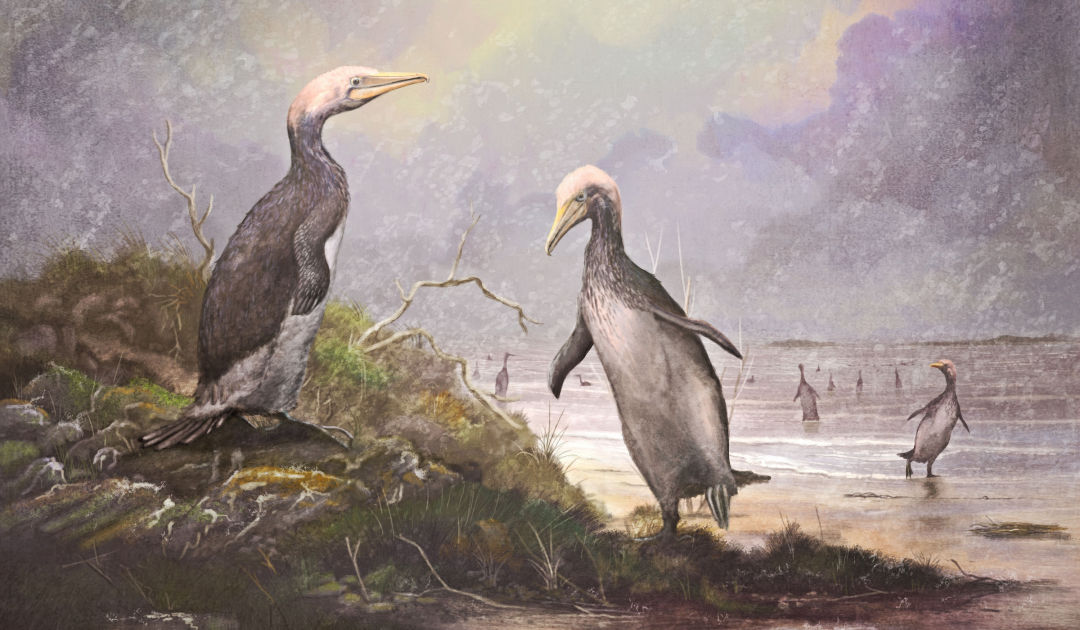
The evolution of penguins is still patchy at best. The bird group is thought to have originated 62 million years ago in the area of New Zealand and then conquered the southern hemisphere. Corresponding fossil finds of the past years at least paint this picture. Now, a research team from Germany, the USA and New Zealand has examined bones of a group of birds that are “only” 34 – 37 million years old, but looked amazingly similar to the early penguins. The special thing is that these birds lived on the northern side of the globe.
The research team, led by lead author Dr. Gerald Mayr of the Senckenberg Research Institute and Museum in Frankfurt, had examined the bones of plotopterids discovered in various locations in the USA, Canada and Japan. They compared them to finds of prehistoric penguins from New Zealand, as they had already discovered similarities at the beginning.
“Plotopterids looked like penguins, they swam like penguins, they probably ate like penguins – but they weren’t penguins.”
Dr Paul Scofield, Canterbury Museum
It turned out that the wing bones, the chest and shoulder bones and also the beaks were really very similar in their appearance and structure. Since it is known that the early penguin species such as Waimanu and Kumimanu were already very well adapted to a life in the water, the same is assumed for the group of plotopterids. “These birds evolved in different hemispheres, millions of years apart, but from a distance you would be hard pressed to tell them apart,” says Dr Paul Scofield of the Canterbury Museum, New Zealand. “Plotopterids looked like penguins, they swam like penguins, they probably ate like penguins – but they weren’t penguins.”

But unlike the penguins and their predecessors, plotopterids would not last until today and went extinct about 25 million years ago. However, the reasons for this are not known. What is certain, however, is that within the approximately 12 million years of their existence, the plotopterids had colonized different areas and therefore also developed different shapes and sizes, similar to the early penguin species. Fossils of the latter showed sizes of almost 40 centimetres up to human sizes. “What’s remarkable about all this is that plotopterids and ancient penguins evolved these shared features independently,” explains Vanesa De Pietri of the Canterbury Museum. “This is an example of what we call convergent evolution, when distantly related organisms develop similar morphological traits under similar environmental conditions.”
The research team also examined the wing bones, because plotopterids, like the early penguins, were seemingly wing-propelled swimmers. Instead of propelling with their oversized feet, as ducks and cormorants do, a few species use their wings to swim. But how and why this mode of movement, which led to the loss of flight ability, developed, is still a mystery. “We think both penguins and plotodopterids had flying ancestors that would plunge from the air into the water in search of food. Over time these ancestor species got better at swimming and worse at flying,” explains Dr. Gerald Mayr. Perhaps one of the benefits of this development was better food yield or more food overall. At least until now, however, we now know that the way of life of the penguins is a model of success under certain circumstances.
Dr Michael Wenger, PolarJournal
More on the subject:






Very nice. Congratulations on the new site. Ill definitely check it out next time I take a break, if that actually ever happens! http://www.m106.com